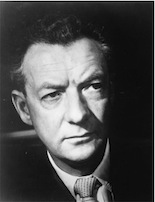 I’ve been giving the TheaterMania iPhone app a try. It’s not bad. Intuitive to use, the app allows you to select from three menus – “Broadway shows”, “shows near me” (which it finds via the GPS system and Google maps), and “browse by location.”
I’ve been giving the TheaterMania iPhone app a try. It’s not bad. Intuitive to use, the app allows you to select from three menus – “Broadway shows”, “shows near me” (which it finds via the GPS system and Google maps), and “browse by location.”
I used the “browse by location” section a couple of days ago to help get information about a play I was seeing at The Magic Theatre. The app only has the major US theatre towns (as well as London) listed, so if you’re looking for a show at, say, Dad’s Garage in Atlanta, you’re out of luck (although I guess you could use the “shows near me” feature to find it maybe.)
The information provided about each show is clear and easy to navigate. You can also browse to see which shows are opening and closing. The “type” and “title” categories seem a but pointless. It seems that the feature is meant to separate shows by genre, eg “musical”, “drama” etc, but all you see is a list of shows with no discernible classification system in place.
The system only failed me when I wanted to find out how best to get from downtown San Francisco on public transport to the Fort Mason Center. The app lets you see a may of where the show is and where you are, but it doesn’t link up with Google Maps as deeply as it should. I would have liked to have been able to plot my route using Google Maps’ handy public transportation feature.
Still, all in all, the app (which is free) is handy for a meandering theatre buff.

 At the weekend, I had my first exposure to shape note singing (also known as “sacred harp singing”) — an American a cappella singing tradition which took off in the mid-19th century in the church tradition.
At the weekend, I had my first exposure to shape note singing (also known as “sacred harp singing”) — an American a cappella singing tradition which took off in the mid-19th century in the church tradition. What other public radio station would allow one of it’s music programmers to create a show on the theme of yoga and singing whose playlist, over the course of an hour, veers between Handel’s “How Beautiful are the Feet” and “Head Crusher” by Megadeath?
What other public radio station would allow one of it’s music programmers to create a show on the theme of yoga and singing whose playlist, over the course of an hour, veers between Handel’s “How Beautiful are the Feet” and “Head Crusher” by Megadeath?
 No one expects opera singers to be able to dance. So when, as a director, you have performers who are capable of using their bodies in expressive ways, you should make the most of them.
No one expects opera singers to be able to dance. So when, as a director, you have performers who are capable of using their bodies in expressive ways, you should make the most of them. I don’t think I’ve ever described a work for the musical theatre as “adorable” before. But that’s the word I would most readily apply to
I don’t think I’ve ever described a work for the musical theatre as “adorable” before. But that’s the word I would most readily apply to  The Lark theatre in Larkspur is a gorgeous art deco movie house. But it’s no place to hear live music, especially of the unadorned vocal variety. The
The Lark theatre in Larkspur is a gorgeous art deco movie house. But it’s no place to hear live music, especially of the unadorned vocal variety. The  Last week, I spent four days working at a conference in Charlotte, North Carolina. I didn’t realize until I arrived what a hub the otherwise fairly nondescript town is for museums. The downtown area is tiny, but it plays home to many institutions including
Last week, I spent four days working at a conference in Charlotte, North Carolina. I didn’t realize until I arrived what a hub the otherwise fairly nondescript town is for museums. The downtown area is tiny, but it plays home to many institutions including 
